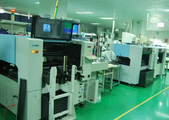What Are the Latest Trends in LED Strip Light Manufacturing?
Navigating the Future: Cutting-Edge Trends in LED Strip Light Manufacturing
The manufacturing landscape of LED strip lights is continuously evolving, driven by technological advances and changing market demands. An LED strip light factory must stay ahead of these trends to remain competitive and meet the growing expectations of consumers and professionals alike. Here’s a detailed look at the latest innovations shaping this dynamic industry.
Integration of Smart Technology
Smart technology is revolutionizing LED strip lights, making them more than just simple lighting solutions. Today’s leading factories are embedding intelligent features such as Wi-Fi and Bluetooth connectivity, allowing users to control lighting via smartphones or voice-activated devices. Recent developments include compatibility with popular home automation systems like Amazon Alexa and Google Home, providing end-users with unprecedented control over lighting ambiance and energy consumption.
Advancements in Color and Brightness Control
Modern LED strip lights offer enhanced color rendering and brightness control, meeting the sophisticated needs of various applications, from residential mood lighting to precise requirements in photography and retail. Manufacturers are increasingly adopting addressable LED technology, which allows individual control of each LED on a strip. This enables dynamic color scenes and animations, a feature that is rapidly becoming standard due to consumer demand for customization.
Improvements in Energy Efficiency
Energy efficiency remains a critical focus, with new LED strips achieving better lumens per watt ratios. Current models on the market offer efficiencies as high as 150 lumens per watt, a significant improvement from previous generations. Factories are also enhancing the design of PCBs to improve thermal management, thus extending the lifespan of LED strips and reducing power consumption.

Eco-Friendly Manufacturing Processes
As environmental regulations tighten and consumer preference shifts towards sustainable products, LED strip light factories are adopting greener manufacturing processes. This includes the use of non-toxic materials, recycling of production waste, and systems that reduce energy consumption during manufacturing. These practices not only comply with global standards like RoHS but also appeal to eco-conscious consumers.
Flexible and Customizable Form Factors
To cater to a broader range of applications, manufacturers are producing LED strip lights in various form factors. Recent innovations include ultra-thin designs and flexible PCBs that can bend around curves and corners, opening up new possibilities for lighting design. Additionally, customization options such as variable strip lengths and multiple mounting solutions are becoming more prevalent, allowing users to tailor products to specific project needs.
Enhanced Durability for Harsh Environments
Factories are increasingly focusing on the durability of LED strip lights, particularly for use in outdoor or industrial environments. Advances in encapsulation technology protect against moisture, dust, and mechanical stress, extending the usability of LED strips in challenging conditions. These improvements not only enhance product reliability but also broaden the scope of applications, from architectural lighting to automotive and marine environments.
By staying informed of these trends, an LED strip light factory not only ensures its products are at the forefront of technology but also meets the evolving needs of a diverse clientele. As the industry moves forward, these innovations will continue to drive growth and expand the possibilities of LED lighting in both commercial and residential spaces.





